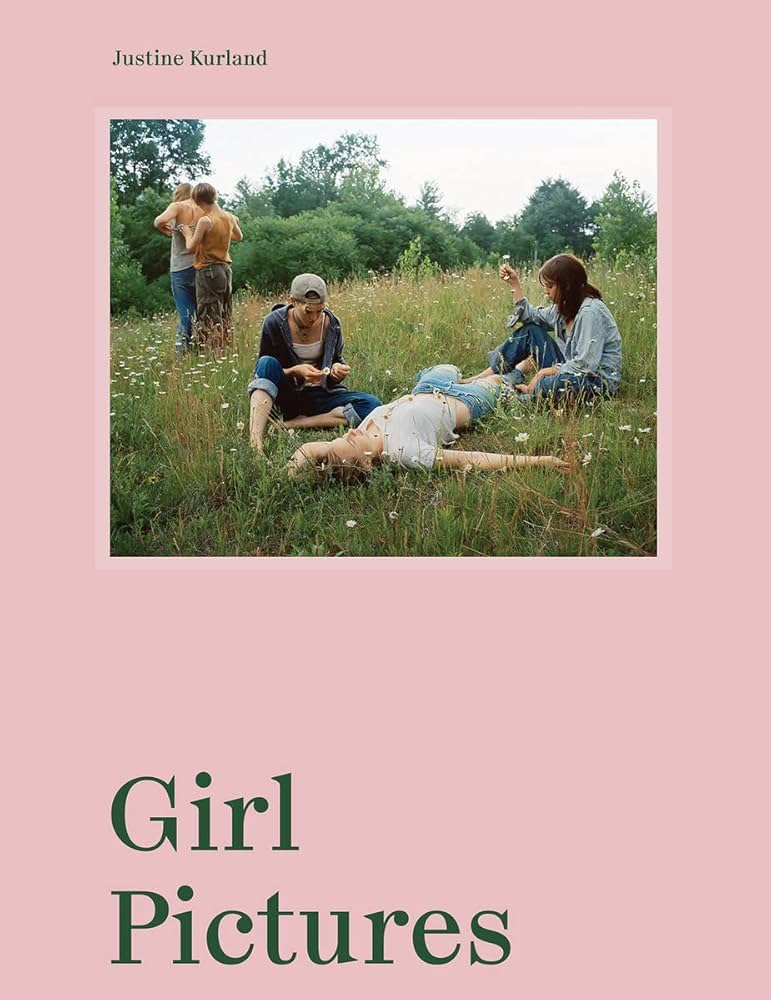Justine Kurland – Girl Pictures

1. Research a photo-book and describe the story it is communicating with reference to subject-matter, genre and approach to image-making.
between 1997 and 2002, Justine Kurland travelled across the United States photographing girls living different lives. The story communicates the rebellious life of a teenage girl where she depicts them in rural areas and in the wilderness. Justine Kurland focusses on themes of freedom, rebellion, and the defiance of gender expectations
2. Who is the photographer? Why did he/she make it? (intentions/ reasons) Who is it for? (audience) How was it received? (any press, reviews, awards, legacy etc.)
The photographer is Justine Kurland. Kurland’s main project was called ‘Girl Pictures’. Kurland started this project in 1997 when she was a graduate student at Yale. Kurland decided to focus on teenagers because of their everlasting state of becoming. She wanted to show girls’ lives, centring them by creating an all-female society. Kurland decided to reverse certain stereotypical representations by rather than showing girls as passive or vulnerable, she represented them as strong, confident and free-spirited. The main environment of her images are usually in wild settings like rural or urban places which would be the opposite of a typical environment where girlhood would be imagined to be placed. Kurland shows her opinions and thoughts by using other people to reflect herself onto them. In her work ‘Girl Pictures’ she depicts young woman in wilderness settings and shows the ongoing theme of freedom and rebellion where she often places the individuals (herself) in natural environments.
3. Deconstruct the narrative, concept and design of the book and apply theory above when considering:
Kurland’s book is a portrait hard cover which is slightly bigger than A4. It has a single photo imprinted on the top half of the book in colour which depicts 5 teenagers in a field. the title of her project (Girl Project) is imprinted on the bottom half of the front cover and it stands out so that when you run your hand across it you can feel where the words are risen above the page. She also has the same on the spine, along with her name. The book is a saddle stitch. Kurland has chosen a single colour for her book which is a light/soft pink. this resembles the stereotypical girl colour and works really well for the theme of her project. If she had used blue it would not have the same effect as it may not match the theme as blue is a stereotypical boy colour. throughout the book, Kurland either puts one phot0 on each side of the page or she puts one big image across the two page spread. these images are glossy and in colour. This theme is consistent apart from the first page where the large image is printed onto pink paper and also in black and white to create a coloured effect to the image. the photo is also textured and not glossy. She also does this at the end of the book as well as the start.
- Book in hand: how does it feel? Smell, sniff the paper.
- Paper and ink: use of different paper/ textures/ colour or B&W or both.
- Format, size and orientation: portraiture/ landscape/ square/ A5, A4, A3 / number of pages.
- Binding, soft/hard cover. image wrap/dust jacket. saddle stitch/swiss binding/ Japanese stab-binding/ leperello
- Cover: linen/ card. graphic/ printed image. embossed/ debossed. letterpress/ silkscreen/hot-stamping.
- Title: literal or poetic / relevant or intriguing.
- Narrative: what is the story/ subject-matter. How is it told?
- Structure and architecture: how design/ repeating motifs/ or specific features develops a concept or construct a narrative.
- Design and layout: image size on pages/ single page, double-spread/ images/ grid, fold- outs/ inserts.
- Editing and sequencing: selection of images/ juxtaposition of photographs/ editing process.
- Images and text: are they linked? Introduction/ essay/ statement by artists or others. Use of captions (if any.)
UNDERSTANDING PHOTOBOOKS:
NARRATIVE, EDITING, SEQUENCING, DESIGN, FORM, FUNCTION
